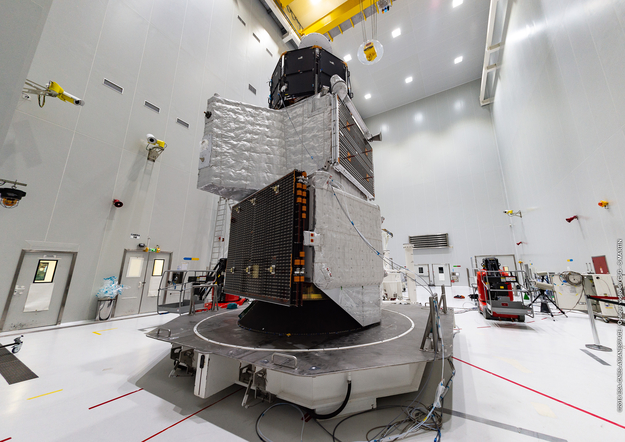The Mercury-bound BepiColombo Mission made its third flyby past the solar system’s innermost world on June 19th.

ESA
Update (June 23rd): The BepiColombo team dropped an amazing sequence of this week's Mercury flyby, worth checking out here.
An intrepid space mission had another brief glimpse of its final destination this week, as the European Space Agency’s BepiColombo flew past Mercury for a third time. The team confirms that the spacecraft is in good health post flyby, and that all instruments performed as planned.
"Everything went very smoothly with the flyby and the images from the monitoring cameras taken during the close-approach phase of the flyby have been transmitted to the ground," said Ignacio Clerigo (ESA) in a recent press release. "While the next Mercury flyby isn't until September 2024, there are still challenges to tackle in the intervening time."

ESA
BepiColombo passed just 236 kilometers (147 miles) from Mercury on June 19th at 3:34 p.m. EDT / 19:34 UT. However, the spacecraft was in the planet’s shadow during closest approach, so the images shown here come from before or after the flyby. (The second flyby on June 23, 2022, was even closer, at just 200 kilometers from the surface.)
Ahead of this week's flyby, the European Space Agency (ESA) released an early teaser image on June 19th. The image was snapped by Mission Camera 1, which was active from 41 hours until 5 hours prior to closest approach.

ESA/BepiColombo/MTM
On June 20th, ESA released more images:

ESA
BepiColombo is a joint mission of ESA and the Japan Aerospace Exploration Agency (JAXA) and ESA, launched on an Ariane 5 rocket from ESA’s Guiana Space Center on October 20, 2018. Getting into the inner solar system is actually fairly difficult, owing to the Sun's deep gravity well. BepiColombo completed an Earth flyby on April 10, 2020, and Venus flybys in late 2020 and August 2021. It's now completing a series of six flybys past Mercury, altering its path in preparation for entering orbit and beginning science operations.
This pass was notable as the first flyby with the laser altimeter and the radio-science experiment switched on. While the main objective of the flyby was to lose momentum in preparation for the spacecraft's eventual arrival into Mercury orbit, the team used the opportunity to test and calibrate instruments onboard.
Science objectives for the mission include studying the planet from the inside out, including its interior structure, local magnetosphere, and exosphere.
The mission will also be the first to test a second predicted modification of Mercury's orbit predicted by Einstein’s general theory of relativity. General relativity explained Mercury's anomalous precession in 1915. In 2018, physicist Clifford Will used the theory to predict a second "quirk" to Mercury's orbit, one that's too subtle to have been seen yet. A spring accelerometer will work together with the radio science experiment to look for the effect.

ESA
Two spacecraft besides BepiColombo have visited Mercury to date: NASA’s Mariner 10 mapped about 45% of the planet's surface during its flyby in March 1974. NASA’s Messenger mapped much more while in orbit, beginning science operations in March 2011 and ending in April 2015. It became the only human artifact to crash on Mercury.
The BepiColombo spacecraft is actually a two-in-one stack of orbiters, both mounted on ESA’s Mercury Transfer Module: JAXA’s Mercury Magnetospheric Orbiter (Mio for short) and ESA’s Mercury Planetary Orbiter (MPO). While en route, the trio make up the Mercury Cruise System. The orbiters will separate from the transfer module after orbital insertion, with Mio in a wider, 9.3-hour orbit and the MPO in a tighter, 2.3-hour orbit.

ESA
The transfer module uses solar electric propulsion to power four thrusters in the most powerful ion engine array ever used in space. The mission will start to employ the ion engines for a complex series of thrust arcs starting this August. These will last weeks to months, enabling the spacecraft to brake against the Sun's enormous gravitational pull.
The mission will make three more passes by Mercury before entering orbit on December 5, 2025; science operations will begin in February 2026. See more details about the mission here:
 0
0









Comments
You must be logged in to post a comment.